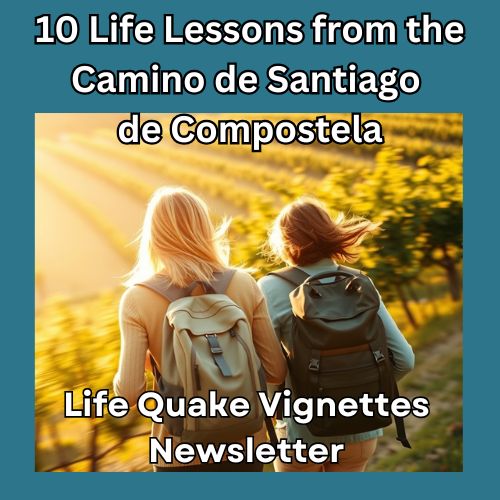Summary
Transformational retreats offer experiences that therapy sessions simply cannot replicate. While therapists provide crucial mental health support within clinical boundaries, retreats create immersive environments where breakthrough moments emerge through nature, community, ritual, and the raw vulnerability that comes from stepping outside your comfort zone. This article explores why sometimes you need to leave your familiar four walls to find the parts of yourself that have been waiting in the wilderness.
Introduction
Picture this: You’ve been seeing your therapist for months, maybe years. You’ve unpacked childhood trauma, dissected relationship patterns, and developed coping strategies that look great on paper. Yet something still feels… stuck. Like you’re watching your life through a window instead of living it.
Here’s what nobody tells you about healing: sometimes the most profound transformations happen not on a couch, but in the middle of a field of sunflowers.
This isn’t a critique of therapy—it’s essential work that saves lives. But there’s something magical that happens when you remove yourself from your familiar environment, surrender control, and allow the unexpected to crack you open in ways that a scheduled fifty-minute session simply cannot.
Dani’s Story: The Unravelling
Dani Parker had always been the problem-solver. The one friends called at 2 AM. The one who had five backup plans for every backup plan. At 42, she was successful by every external measure—corner office, mortgage paid off, LinkedIn profile that made people nod approvingly.
But sitting in her therapist’s office that Thursday afternoon, surrounded by the familiar beige walls and the soft tick of the wall clock, she felt like she was suffocating on her own competence.
“I just feel… empty,” she said, her voice barely above a whisper. “Like I’ve been performing my life instead of living it.”
Dr. Martinez nodded knowingly. They’d been circling this theme for months. “What do you think might help you feel more connected to yourself?”
Dani’s answer surprised them both: “I want to disappear.”
Three weeks later, Dani found herself standing at the edge of a forest in Northern California, her designer luggage looking absurdly out of place among the towering redwoods. The retreat centre appeared more like a summer camp than a spa—weathered cabins, communal bathrooms, and a dining hall that smelled of decades of shared meals and honest conversations.
Her first instinct was to run. This wasn’t her. She didn’t do rustic. She didn’t do vulnerable. She certainly didn’t do group sharing circles with strangers who seemed far too comfortable crying in public.
But something about the way the late afternoon light filtered through the canopy made her pause. The air tasted different here—cleaner, somehow more honest.
The first night, she lay in her narrow bunk listening to her roommate Sarah’s gentle snoring and the symphony of unfamiliar sounds outside. No traffic hum. No neighbour’s television bleeding through thin walls. Just wind and wood and the profound disquiet that comes when you’re truly away from everything you know.
By day three, something started to shift.
It began during morning meditation. Sitting cross-legged on a worn cushion in a circle of twenty other seekers, Dani felt her carefully constructed walls begin to crumble. Not all at once—more like a gentle erosion, grain by grain.
The facilitator, a woman named Grace whose laugh lines spoke of deep joy, invited them to simply notice what arose. No fixing. No analysing. Just witnessing.
For the first time in years, Dani stopped trying to solve her problem self.
The breakthrough came during the solo hike on day four. Each participant was given a packed lunch and sent into the wilderness with simple instructions: walk until you find a place that calls to you, then sit and listen.
Dani walked for two hours, her expensive hiking boots (purchased hastily at REI the week before) carrying her deeper into the forest than she’d ever been. The path eventually dissolved into deer trails, then disappeared entirely.
She found herself in a clearing beside a creek, where the water moved over smooth stones with a sound like whispered secrets. The smell of pine and earth filled her nostrils as she settled onto a fallen log, her lunch forgotten.
That’s when it happened.
Without warning, she began to cry. Not the delicate tears she occasionally shed in therapy, but deep, body-shaking sobs that seemed to come from her toes. Thirty years of held breath released in great, gulping waves.
She cried for the little girl who learned to be perfect to earn love. She cried for the dreams she’d buried beneath sensible choices. She cried for all the times she’d said “I’m fine” when she was anything but.
The forest held her grief without judgment. The creek kept flowing. A hawk circled overhead, bearing witness to her unravelling.
When the tears finally subsided, Dani felt hollow—but in the best possible way. Like a vessel that had been emptied of stagnant water and was finally ready to be filled with something fresh.
She stayed in that clearing until the sun began to sink, her fingers tracing patterns in the earth. For the first time in decades, she felt present in her own skin.
That evening, when the group gathered for the sharing circle, Dani spoke her truth with a voice she barely recognised as her own. She talked about the clearing, about the tears, about the strange lightness she felt.
“I think I’d forgotten who I was underneath all the doing,” she said, her hands wrapped around a warm mug of herbal tea. “Today I remembered that I’m not just what I accomplish. I’m also what I feel, what I fear, what I love when nobody’s watching.”
Sarah, her bunkmate, reached over and squeezed her hand. “I see you,” she whispered. Simple words that hit like lightning.
On the final night, the group created a fire ceremony. Each person wrote down something they were ready to release and fed it to the flames. Dani watched her carefully penned words—”I am only valuable when I’m useful”—curl into ash and smoke, disappearing into the star-drunk sky.
The drive home was quiet, contemplative. Dani’s phone, which had been buzzing impatiently in her cabin for five days, finally came back to life. Seventeen missed calls. Forty-three emails. The world of deadlines and expectations rushing back like a tide.
But something fundamental had shifted. The woman who returned to her downtown apartment was the same person who had left, yet completely different. She carried the clearing with her now, that place of deep listening. She carried Sarah’s witness and Grace’s wisdom and the memory of tears that had nowhere to hide.
Months later, sitting in Dr. Martinez’s office, Dani reflected on how her retreat had complemented her therapy in ways she couldn’t have imagined.
“Therapy helped me understand the patterns,” she explained. “But retreat helped me feel something beyond the patterns. It helped me remember that I’m not just a problem to be solved—I’m a human being worthy of love, mess and all.”
She paused, her gaze drifting toward the window where afternoon light painted familiar beige walls gold.
“Sometimes you have to get lost to find yourself. And you can’t get properly lost in a fifty-minute session.”
Five Key Takeaways
1. Environment Shapes Experience
The clinical setting of a therapist’s office, while safe and necessary, can inadvertently reinforce our tendency to intellectualise our experiences. Retreats immerse us in environments that naturally facilitate dropping from our heads into our hearts and bodies.
2. Time and Space for Integration
Therapy sessions are bound by time constraints that, while creating helpful structure, can limit deep processing. Retreats offer the luxury of letting insights unfold organically without the pressure of a ticking clock.
3. Community Witness
While therapy provides the crucial foundation of a professional therapeutic relationship, retreats offer the powerful medicine of being seen and held by a community of fellow travellers on similar journeys.
4. Embodied Learning
Many of our deepest healing happens through the body, not just the mind. Retreats naturally incorporate movement, breathwork, and somatic experiences that complement the cognitive processing of traditional therapy.
5. Disruption of Patterns
Sometimes we need to physically remove ourselves from our familiar environments to break free from ingrained patterns. Retreats force us out of our comfort zones in ways that can catalyse breakthrough moments.
Eye-Opening Exercises
The Clearing Within
Think of a time when you felt most authentically yourself—perhaps in nature, travelling, or during a moment of unexpected vulnerability. Close your eyes and return to that moment using all five senses.
Write for 20 minutes without stopping, exploring:
- What did that space feel like in your body?
- What truths emerged when you stopped performing?
- How did that environment support your authentic self in ways your daily life might not?
- What would it look like to carry that “clearing” with you into your everyday world?
Don’t edit or censor. Let the words flow like water over stones.
The Sacred Pause Practice Throughout your day, set random phone alarms. When they ring, take three deep breaths and ask: “Who am I being right now? Who do I want to be being?” This mini-retreat practice helps you reconnect with authenticity in real-time.
Weekly Solo Dates Schedule weekly two-hour solo excursions to unfamiliar places—a different neighbourhood café, a hiking trail, a museum you’ve never visited. Practice being with yourself without an agenda or outcome.
“We are not going to change the world. But in walking, we change ourselves, and in changing ourselves, we change the world.” — Paulo Coelho
Further Reading
- “A New Earth” by Eckhart Tolle – Explores presence and ego dissolution
- “Women Who Run With the Wolves” by Clarissa Pinkola Estés – On reclaiming wild, authentic self
- “The Gifts of Imperfection” by Brené Brown – Vulnerability and wholehearted living
- “Wild” by Cheryl Strayed – Memoir of transformation through solo hiking
- “The Power of Now” by Eckhart Tolle – Living in present moment awareness
- “Big Magic” by Elizabeth Gilbert – Creative courage and authentic living
Ready to dive deeper into your own transformation journey? Download my free guide “10 Lessons Learned on the Camino” – discover the profound insights that emerge when we step outside our comfort zones and trust the path to teach us what we need to know.
Frequently Asked Questions
Q: Isn’t this just privileged escapism? Not everyone can afford retreats. A: You’re absolutely right that retreat accessibility is a real issue. However, the principles—immersion, community, time for integration—can be adapted. Weekend camping trips, day-long solo adventures, or even creating retreat-like experiences at home can provide similar benefits. The key is intentionally disrupting your normal patterns and creating space for deeper listening.
Q: How do I know if I need a retreat or if therapy is sufficient? A: Both serve different but complementary purposes. If you feel stuck despite good therapeutic work, if you’re craving embodied experiences, or if you sense there are parts of yourself you can only access outside familiar environments, a retreat might be valuable. Think of therapy as tending the garden and retreats as occasionally replanting yourself in entirely new soil.
Q: What if I’m an introvert and the idea of group sharing terrifies me? A: Many retreats offer solo or small-group options. The key isn’t forced extroversion—it’s creating conditions for authentic self-expression. Sometimes introverts find that retreat environments actually make authentic sharing easier because everyone is in a more vulnerable, open space together.
Q: How do I integrate retreat insights back into daily life? A: This is the crucial work. Create daily practices that reconnect you with your retreat insights—morning pages, nature walks, regular check-ins with retreat friends. The goal isn’t to recreate the retreat experience but to carry its essence into your regular life. Think of it as keeping a small flame burning rather than trying to maintain a bonfire.
Q: Are retreat facilitators qualified to handle serious mental health issues? A: Reputable retreat leaders should have clear boundaries about their scope of practice and refer participants to licensed therapists for clinical mental health concerns. Always research facilitators’ credentials and ensure they work collaboratively with, not instead of, professional mental health support when needed.
Conclusion
Therapy and retreats aren’t competitors—they’re dance partners in the complex choreography of human healing and growth. While therapy provides the essential foundation of clinical support, professional guidance, and consistent care, retreats offer the wild medicine of immersion, community, and the profound teachings that emerge when we allow ourselves to be cracked open by beauty, challenge, and the unknown.
Dani’s story reminds us that sometimes the most profound healing happens not when we’re trying to fix ourselves, but when we’re brave enough to step into spaces that allow us to remember who we are beneath all our doing, achieving, and performing.
Perhaps the question isn’t whether you need therapy or retreat, but rather: What does your soul need right now to feel most alive? Sometimes that’s the safety of a therapist’s office. Sometimes it’s the wild embrace of the unknown. And sometimes—perhaps most often—it’s both.
The invitation is always the same: Show up. Be willing to be surprised. Trust that the path will teach you what you need to know.
Want to explore your own transformative journey? Download my free guide “10 Lessons Learned on the Camino” and discover how stepping outside your comfort zone can lead to profound personal insights and lasting change.

10 Powerful Life Lessons Learned While Walking the Camino de Santiago – a free guide filled with 10 not just “quaint anecdotes” or Instagram-worthy moments (though there are plenty of those) but real transformations from real people who walked the same insight-giving trail you might want to walk one day – Subscribe to my monthly newsletter to Download the Guide

“I am an experienced medical doctor – MBChB, MRCGP, NLP master pract cert, Transformational Life Coach (dip.) Life Story Coach (cert.) Stress Counselling (cert.) Med Hypnotherapy (dip.) and EAGALA (cert.) I may have an impressive number of letters after my name, and more than three decades of professional experience, but what qualifies me to excel at what I do is my intuitive understanding of my clients’ difficulties and my extensive personal experience of managing major life changes using strategies I developed over many years.” Dr M Montagu
Research
- Studies indicate that attending transformational retreats results in statistically significant improvements in a range of health outcomes. Measured effects include lower weight and abdominal girth, reduced blood pressure, decreased depression, anxiety, and stress, as well as enhanced mood and cognitive function. These improvements are often maintained for weeks—or even months—after the retreat ends.
- Retreat experiences can foster enduring positive behavioural changes, including increased mindfulness, healthier lifestyle choices, and improved coping skills for stress. Many participants report sustained adoption of mindfulness practices, enhanced life satisfaction, and increased resilience post-retreat.
Cohen MM, Elliott F, Oates L, Schembri A, Mantri N. Do Wellness Tourists Get Well? An Observational Study of Multiple Dimensions of Health and Well-Being After a Week-Long Retreat. J Altern Complement Med. 2017 Feb;23(2):140-148.
Khoury B, Knäuper B, Schlosser M, Carrière K, Chiesa A. Effectiveness of traditional meditation retreats: A systematic review and meta-analysis. J Psychosom Res. 2017 Jan;92:16-25.
Naidoo, D., Schembri, A. & Cohen, M. The health impact of residential retreats: a systematic review. BMC Complement Altern Med 18, 8 (2018).
Xiaoxiao Fu, Maneenuch Tanyatanaboon, Xinran Y. Lehto, Conceptualizing transformative guest experience at retreat centers, International Journal of Hospitality Management, Volume 49, 2015, Pages 83-92, ISSN 0278-4319

